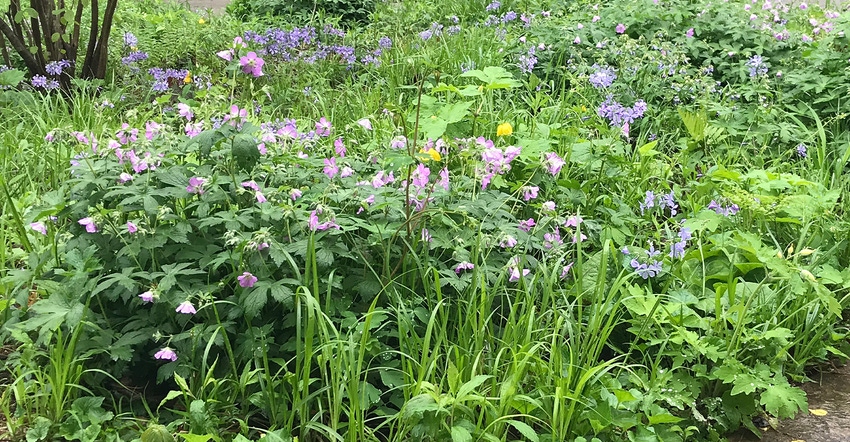January 17, 2020

Every gardener knows what happens when you install plants 2 feet apart in a garden without mulch: The soil between the plants grows up in weeds. So, for decades, gardeners have used mulch — a cheap, organic and low-tech barrier to suppress weed seeds from sprouting.
Mulch is added once or twice yearly, and it normally is noncomposted shredded bark or leaves. Note that compost isn’t used as mulch because it breaks down too fast and encourages weeds, which defeats the purpose.
Gravel mulch is used for rain gardens where water flows in and out, potentially causing soil erosion. Although the gravel itself lasts forever, it still needs to be added every few years when silt and organic matter build up.
In recent years, gardeners have noticed something different. When plants are installed close together and touch each other, they function more like they do in nature. They overlap each other (above and below ground) so densely that they do a good job of preventing weeds from sprouting, even without brown mulch.
Living mulch
This “green mulch” method requires selecting the right plants for the right place, and plants that are long-lived and able to compete equally with each other. Weaker plants will get overtaken by stronger ones without the watchful eye of a gardener who “edits” out seedlings, stems and side shoots that are overly vigorous.
Green mulch, or living mulch, has the added benefit of allowing rainwater to enter the ground and prevent surface soil erosion. This happens without the need for brown mulch because networks of deep plant roots are pathways for rainwater, assisting with absorption deep into the soil.
Green mulch is alive and growing, and so if plants are thriving, you never have to add traditional brown mulch once plants are established.
Additionally, green mulch plants inject nutritious organic matter deep into the soil column as roots grow deeper each year and then die. Over time, this cycle of root growth and dieback transforms poor, compacted clay soil into richer organic soil deep below the soil surface. Although it can take five or 10 years to transform really poor soil, the end result is deep organic soil and more robust plants.
By contrast, traditional mulch breaks down at the soil surface, releasing nutrients to roots only at the surface where roots tend to congregate, making them more vulnerable to drought and dependent on regular watering.
Green mulch plan
If plants are planted more closely in the garden, there is greater potential for increased plant and wildlife abundance diversity, because you can install more plants per 100 square feet. For example, if you plant a 10-by-10-foot area, then you would need 13 plants when planted 3 feet apart; 29 plants at 2 feet; 115 plants at 1 foot; and 260 plants if installed 8 inches apart.
Spaced green mulch is not for everybody. At this close spacing, the look more resembles nature than a garden. The style and method of this kind of garden is referred to as a designed plant community.
But when combined with mowed grass or split-rail edges, boulders, pathways, benches or sculpture, it can work nicely. Also, if you buy plugs at 75 cents each, it becomes affordable.
During establishment, care must be taken to prevent any one species from taking over. This requires “equalizing” the growth of each species by hand-pruning the foliage of the more aggressive species. If you don’t, the weaker-growing species will get crowded out.
Be careful not to trample plants when walking through the planting, and remember that not all species get established at the same rate. Some will grow fast and flower in year one. Others may take three to five years.
During the first two years of establishment, it’s not about colorful flowers: It’s all about “equalizing” the playing field. By the third year, all or most species should be established and require less-intensive attention.
At this point, you can say goodbye to brown mulch and hello to permanent, low-maintenance, high-diversity green mulch. Happy green mulching, ya’ll!
Woodbury is the curator of the Whitmore Wildflower Garden at Shaw Nature Reserve in Gray Summit, Mo., and an adviser to the Missouri Prairie Foundation’s Grow Native! program.
About the Author(s)
You May Also Like




